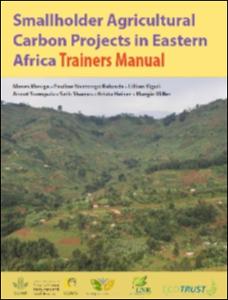agriculture
AGROVOC URI:
Safe wastewater reuse: a call for sanitation safety plans.
The publication of the third edition of the WHO Guidelines for Drinkingwater Quality (WHO, 2004) introduced the concept of integrated, preventive risk management through water safety plans (WSPs) as a means to put into operation the principles, standards, norms and best practice proposed by the Guidelines. The WHO suggests applying the same concept to support the implementation and operationalization of their Guidelines for the Safe Use of Wastewater, Excreta and Greywater in Agriculture and Aquaculture (WHO, 2006) which follow the same principles of HACCP and health-based targets.
Secondary forests in swidden agriculture inthe highlands of Thailand
Swidden farming is the main agent of conversion of primary forests to secondary forests in the highlands of mainland Southeast Asia, but there is a deterioration and decline of the practice with land use intensification. The population growth in northern Thailand has forced lowland farmers practising permanent wet rice cultivation to turn to short rotation swidden in the foot hill zone. Highland swidden agriculturists are adopting more intensive forms of swidden or are shifting to permanent farming.
Smallholder Agricultural Carbon Projects in Eastern Africa
This manual has been developed to help build the capacities of farmers, farmers groups, extension staff and project managers who are implementing agricultural carbon projects in Eastern Africa. The manual describes the steps for implementing an afforestation/reforestation voluntary carbon project based on the Plan Vivo Standard.
Southern Africa’s water-energy nexus: towards regional integration and development
The Southern African Development Community’s (SADC) water and energy sectors are under increasing pressure due to population growth and agricultural and industrial development. Climate change is also negatively impacting on the region’s water and energy resources. As the majority of SADC’s population lives in poverty, regional development and integration are underpinned by water and energy security as the watercourses in the region are transboundary in nature. This paper reviews the region’s water and energy resources and recommends policies based on the water–energy nexus approach.
Sustainable intensification of small-scale agriculture in the upper Blue Nile Basin: Multi-criteria optimization of rainwater management strategies
Technological change and deforestation: a theoretical overview
This chapter spells out the theoretical framework for the discussion and case studies of the book. First, it provides precise definitions of technological change and classify technological change into different types based on their factor intensities. The discussion starts off with a single farm household. Two key concepts for understanding how that household will respond to technological changes are economic incentives and constraints. The former relates to how new technologies influence the economic return of different activities.
The impact of investment in smallholder irrigation schemes on irrigation expansion and crop productivity in Malawi
Reliance on rainfall for agriculture and increased climate change and variability pose growing production risks in developing countries. Agriculture in Sub-Saharan Africa is dominated by smallholder farmers who depend mainly on rain-fed agriculture, putting food security at both household and national levels at risk, especially in the event of drought. Investment in smallholder irrigation becomes a priority in developing countries if food security and national development goals are to be met, as their economies are agro-based.
The 'Trickle Down' of IWRM: a case study of local-level realities in the Inkomati Water Management Area, South Africa
The historical legacy in South Africa of apartheid and the resulting discriminatory policies and power imbalances are critical to understanding how water is managed and allocated, and how people participate in designated water governance structures. The progressive post-apartheid National Water Act (NWA) is the principal legal instrument related to water governance which has broadly embraced the principles of Integrated Water Resources Management (IWRM).
Understanding groundwater storage changes and recharge in Rajasthan, India through remote sensing
Groundwater management practices need to take hydrogeology, the agro-climate and demand for groundwater into account. Since agroclimatic zones have already been demarcated by the Government of India, it would aid policy makers to understand the status of groundwater recharge and discharge in each agroclimatic zone. However, developing effective policies to manage groundwater at agroclimatic zone and state levels is constrained due to a paucity of temporal data and information.
Wetting and drying: reducing greenhouse gas emissions and saving water from rice production
A sustainable food future will require reductions in greenhouse gas emissions from agriculture even as the world produces substantially more food. The production of rice, the staple crop for the majority of the world’s population, emits large quantities of methane, a potent greenhouse gas. According to various governments, global rice production emits 500 million tons of greenhouse gases (carbon dioxide equivalent) per year—or at least 10 percent of total agricultural emissions.
Land investments, accountability and the law: Lessons from Senegal
In Senegal, concern about large-scale land acquisitions has been growing since 2000. Senegalese agriculture has long relied on small-scale family holdings and extensive agriculture. But the current population growth rate, combined with rapid urban development and natural resources degradation, have inevitably changed the game.




